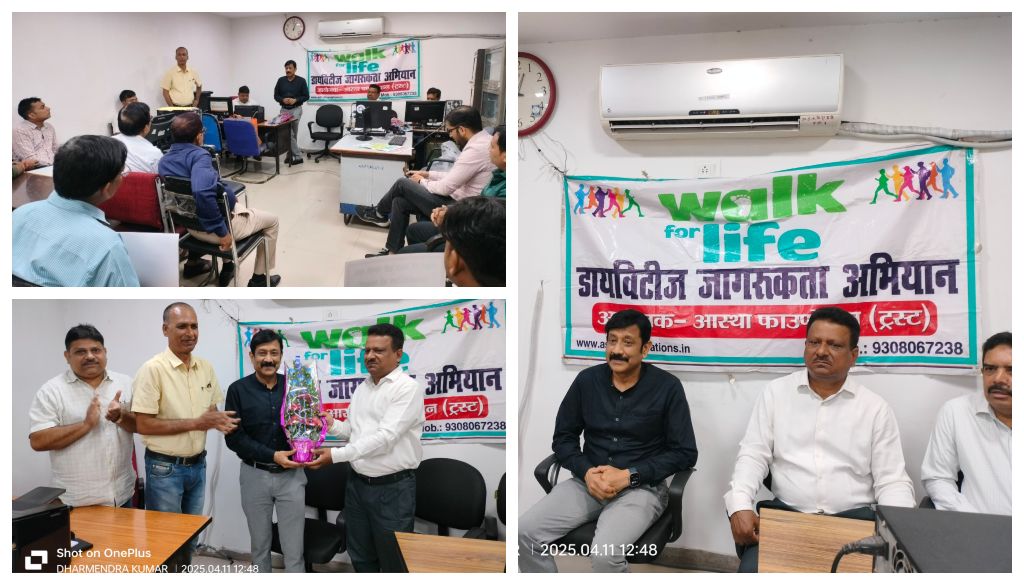
Patna: Lifestyle diseases such as hypertension, diabetes and obesity are quietly becoming major public health threats in India, a leading physician has warned, urging individuals and institutions alike to prioritize preventive care and healthier living.
Speaking at the “Walk for Life” event organised by the Aastha Foundation at Son Bhawan in Patna, Dr Diwakar Tejaswi, Medical Director of Public Awareness for Healthy Approach for Living (PAHAL), said the increasing burden of non-communicable diseases (NCDs) was linked to modern sedentary routines, poor diet and chronic stress.
“These diseases don’t emerge suddenly — they creep in over time, fueled by unhealthy habits and ignored warning signs,” Dr Tejaswi told a gathering that included officials from Oriental Insurance. He described a concerning rise in conditions such as high blood pressure, heart disease, fatty liver, insomnia and psychological stress, especially among senior professionals.
“Long hours, high-stress environments, lack of physical activity — these are daily realities for many in high-responsibility roles. And they’re paying for it with their health,” he said.
To counter the trend, Dr Tejaswi outlined four key pillars for prevention: a nutritious, balanced diet; regular exercise; stress management; and routine health check-ups. “Eat more fruits, vegetables and whole grains, cut back on salt and fats, avoid junk food and sugary snacks — small changes can have a big impact,” he said.
He also emphasised simple yet effective actions such as brisk walking, yoga, using stairs instead of lifts, and incorporating mindfulness or pranayama techniques to manage stress. “Six to eight hours of restful sleep, regular screenings for blood pressure, sugar and cholesterol levels, and a strong support system at work and home are vital to managing risk,” he added.
Labelled “silent killers”, lifestyle diseases often go unnoticed until they lead to serious complications. “Awareness is the first step — but it must be followed by consistent effort,” Dr Tejaswi said. “A healthy officer is the backbone of a healthy institution. It’s time we placed our health where it belongs: at the top of the agenda.”







